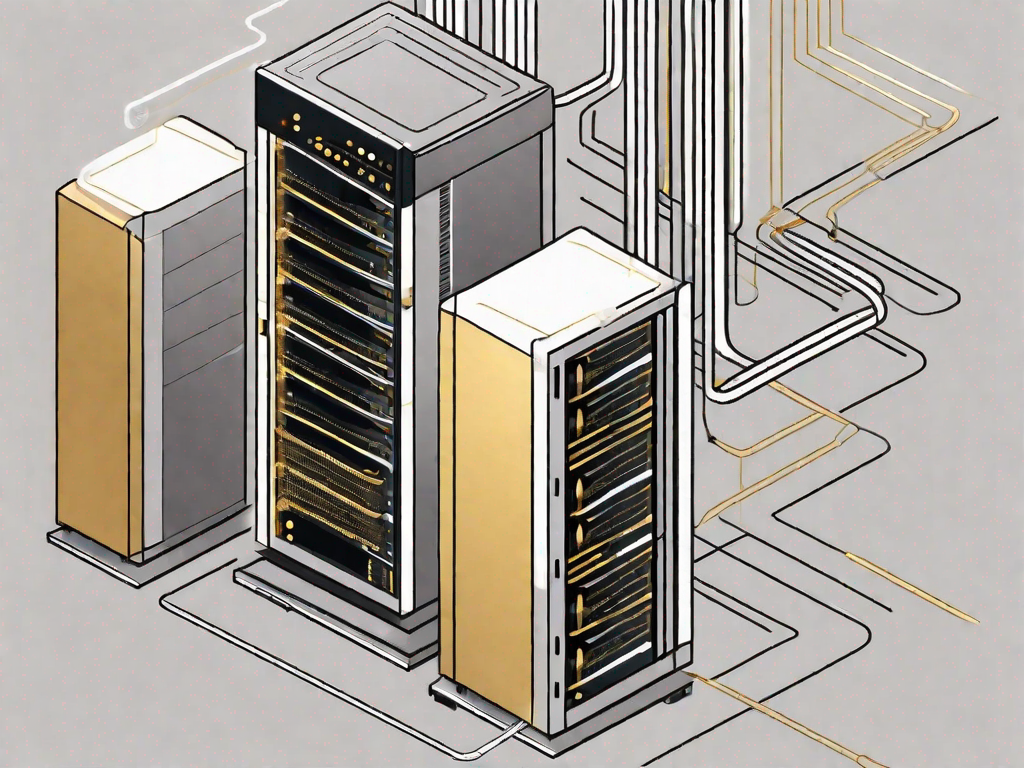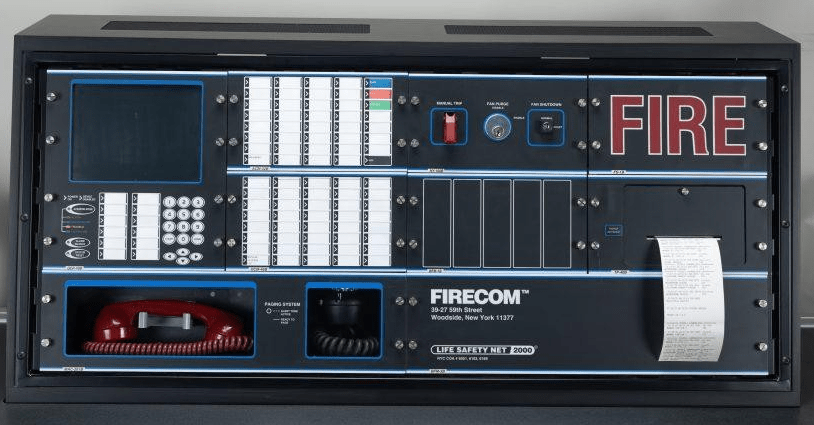
Network considerations when upgrading to EST4
Upgrading to a new network system can be a significant decision for any organization, and it requires careful consideration of various factors. When it comes to upgrading to the EST4 network system, there are several key aspects that need to be taken into account. In this article, we will explore the network considerations that organizations should keep in mind when upgrading to EST4, including understanding the basics of EST4, conducting a pre-upgrade network assessment, planning the upgrade, making network changes for EST4 implementation, optimizing network performance post-upgrade, ensuring network security, and measuring the success of the upgrade.
Understanding the Basics of EST4
Before embarking on an EST4 upgrade, it is essential to have a clear understanding of the basics of this network system. EST4 is a state-of-the-art network solution that offers numerous features and benefits for organizations. Some of the key features of EST4 include advanced data transmission capabilities, enhanced network security measures, and improved overall network performance. Familiarizing yourself with these features will help you make informed decisions throughout the upgrade process.
EST4 is designed to meet the growing demands of modern organizations. With its high-speed data transmission capabilities, it allows for faster and more efficient communication between devices and systems. This is particularly beneficial for businesses that rely heavily on data-intensive applications, such as video conferencing, real-time collaboration, and large file transfers. By upgrading to EST4, organizations can experience a significant boost in productivity and efficiency.
One of the standout features of EST4 is its enhanced network security measures. In today’s digital landscape, cybersecurity is a top concern for organizations of all sizes. EST4 addresses this concern by implementing robust security protocols and encryption techniques to protect sensitive data from unauthorized access. This ensures that your organization’s valuable information remains secure and protected from potential threats.
Furthermore, EST4 offers improved overall network performance. With its advanced technology and optimized network infrastructure, it enables faster data processing and reduces network latency. This means that users can enjoy seamless and uninterrupted connectivity, leading to enhanced user experiences and increased customer satisfaction.
Key Features of EST4
EST4 offers a range of key features that make it an attractive choice for organizations. These features include:
- High-speed data transmission: EST4 enables lightning-fast data transfer, allowing for quick and efficient communication between devices and systems.
- Enhanced network monitoring capabilities: With EST4, organizations can closely monitor their network performance, identify potential issues, and take proactive measures to ensure optimal network operation.
- Flexible scalability options: EST4 is designed to accommodate the evolving needs of organizations. It offers flexible scalability options, allowing businesses to easily expand their network infrastructure as their requirements grow.
- Seamless integration with existing systems: EST4 seamlessly integrates with existing network systems, minimizing disruptions and simplifying the upgrade process.
Technical Specifications of EST4
In addition to understanding the key features, it is crucial to familiarize yourself with the technical specifications of EST4. This includes the hardware requirements, software compatibility, and integration capabilities. By knowing the technical aspects of EST4, you can ensure compatibility with your existing network infrastructure and identify any necessary upgrades or modifications.
EST4 is compatible with a wide range of hardware components, including routers, switches, and servers. It supports various networking protocols, such as TCP/IP, UDP, and ICMP, ensuring seamless communication across different devices and systems. Additionally, EST4 is designed to integrate with popular operating systems, such as Windows, macOS, and Linux, making it accessible to a wide range of users.
When considering an EST4 upgrade, it is important to assess your organization’s current network infrastructure and determine if any hardware upgrades or modifications are necessary. This may involve upgrading routers or switches to support the increased data transmission capabilities of EST4 or ensuring that your servers meet the recommended specifications for optimal performance.
Furthermore, it is essential to consider the compatibility of your existing software systems with EST4. This includes applications, firewalls, and security software. Ensuring that your software is compatible with EST4 will help prevent any compatibility issues and ensure a smooth transition to the upgraded network system.
In conclusion, understanding the basics of EST4 is crucial before embarking on an upgrade. By familiarizing yourself with the key features and technical specifications, you can make informed decisions and ensure a successful implementation of EST4 in your organization.
Pre-Upgrade Network Assessment
Before proceeding with the EST4 upgrade, conducting a thorough pre-upgrade network assessment is vital. This assessment involves evaluating the current network infrastructure and identifying potential challenges that may arise during the upgrade process.
Upgrading a network system requires careful planning and analysis to ensure a smooth transition. The pre-upgrade network assessment serves as a roadmap for the upgrade process, helping to identify any potential roadblocks and minimize disruptions to network operations.
Evaluating Current Network Infrastructure
The first step in the pre-upgrade network assessment is to evaluate the current network infrastructure. This includes a comprehensive analysis of network components, such as routers, switches, and cables. It is essential to identify any outdated or incompatible equipment that may need to be replaced or upgraded to support EST4.
During the evaluation process, network administrators meticulously examine the performance and capacity of each network component. They assess the bandwidth utilization, network latency, and overall network stability. This evaluation provides valuable insights into the existing network’s strengths and weaknesses, enabling administrators to make informed decisions about necessary upgrades or replacements.
Furthermore, the evaluation involves examining the network’s security measures. This includes assessing firewall configurations, intrusion detection systems, and access control policies. Identifying any vulnerabilities or weaknesses in the network’s security infrastructure is crucial to ensure that the upgrade does not compromise the overall network security.
Identifying Potential Challenges
During the network assessment, it is important to identify potential challenges that may arise during the EST4 upgrade. This includes considering factors such as network downtime, compatibility issues, and the need for additional resources or manpower.
Network downtime is a significant concern during any upgrade process. It is crucial to minimize the impact on network operations and ensure that critical services remain accessible to users. By identifying potential points of failure or bottlenecks in the network, administrators can develop strategies to mitigate downtime and implement failover mechanisms to maintain service availability.
Compatibility issues can also pose challenges during the upgrade. The EST4 system may require specific software versions or hardware specifications that are not currently supported by the existing network infrastructure. Identifying these compatibility gaps in advance allows administrators to plan for necessary upgrades or replacements, ensuring a seamless integration of the new system.
Additionally, the pre-upgrade assessment may reveal the need for additional resources or manpower. Upgrading a network system often requires specialized skills and expertise. By identifying these resource requirements early on, administrators can allocate the necessary resources and ensure that the upgrade process is adequately supported.
In conclusion, a pre-upgrade network assessment is a critical step in preparing for the EST4 upgrade. By evaluating the current network infrastructure and identifying potential challenges, administrators can develop a comprehensive upgrade plan that minimizes disruptions and ensures a successful transition to the new system.
Planning Your EST4 Upgrade
Once you have completed the network assessment, it is time to plan your EST4 upgrade. This involves setting clear upgrade goals and creating a timeline for the upgrade process.
Planning your EST4 upgrade is a critical step towards ensuring the success of your network infrastructure. It requires careful consideration of various factors, including your organization’s objectives, network performance, data security, and the integration of new functionalities.
Setting Upgrade Goals
When setting upgrade goals, it is important to align them with your organization’s overall objectives. These goals may include improving network performance, enhancing data security, or enabling new functionalities. By establishing clear goals, you can focus your efforts and measure the success of the upgrade effectively.
Improving network performance is often a top priority for organizations seeking to upgrade their EST4 systems. This can involve upgrading hardware components, optimizing network configurations, or implementing advanced network management tools. By setting specific performance improvement goals, such as increasing network bandwidth or reducing latency, you can ensure that the upgrade delivers the desired results.
Data security is another crucial aspect to consider when planning your EST4 upgrade. With the increasing number of cyber threats, organizations must ensure that their network infrastructure is robust and secure. Upgrading to the latest EST4 version can provide enhanced security features, such as advanced encryption algorithms, intrusion detection systems, and secure remote access capabilities. By setting upgrade goals related to data security, you can strengthen your network’s defenses and protect sensitive information.
Enabling new functionalities is often a driving force behind upgrading EST4 systems. As technology evolves, organizations need to adapt and leverage new capabilities to stay competitive. Upgrading to the latest EST4 version can introduce features such as cloud integration, IoT support, or advanced analytics tools. By setting upgrade goals that align with your organization’s strategic direction, you can unlock new possibilities and drive innovation.
Creating a Timeline for Upgrade
Creating a timeline for the upgrade is crucial to ensure a smooth and efficient process. This timeline should include specific milestones and deadlines for each phase of the upgrade, such as equipment procurement, network configuration, and testing. By adhering to a well-defined timeline, you can minimize downtime and disruptions to your network operations.
The timeline for your EST4 upgrade will depend on various factors, including the complexity of your network infrastructure, the scale of the upgrade, and the availability of resources. It is important to allocate sufficient time for each phase of the upgrade, considering factors such as equipment delivery lead times, configuration complexity, and testing requirements.
During the equipment procurement phase, you will need to identify the required hardware and software components for your EST4 upgrade. This may involve conducting research, obtaining quotes from vendors, and evaluating compatibility with your existing infrastructure. By carefully planning this phase, you can ensure that you have the necessary resources in place when the upgrade process begins.
Network configuration is a critical phase of the upgrade process. It involves implementing the necessary changes to your network infrastructure to support the upgraded EST4 system. This may include reconfiguring routers, switches, and firewalls, as well as updating network protocols and security settings. By allocating sufficient time for this phase, you can minimize the risk of configuration errors and ensure a seamless transition to the upgraded system.
Testing is an essential step in the upgrade process to validate the functionality and performance of the upgraded EST4 system. This may involve conducting various tests, such as network load testing, security vulnerability assessments, and compatibility checks with existing applications. By dedicating adequate time for testing, you can identify and address any issues or compatibility issues before deploying the upgraded system into production.
In conclusion, planning your EST4 upgrade requires careful consideration of upgrade goals and the creation of a well-defined timeline. By setting clear goals aligned with your organization’s objectives and adhering to a structured timeline, you can ensure a successful upgrade process that delivers improved network performance, enhanced data security, and enables new functionalities.
Network Changes for EST4 Implementation
Implementing EST4 involves making specific network changes to accommodate the new system. These changes include addressing hardware requirements and ensuring software compatibility and integration.
When it comes to implementing EST4, it is crucial to consider the hardware requirements to ensure optimal performance. This means taking into account factors such as server capacity, network bandwidth, and storage capabilities. Assessing your existing hardware infrastructure is essential to identify any gaps and make necessary upgrades or additions. By doing so, you can ensure that your network is capable of handling the demands of EST4.
However, hardware requirements are just one piece of the puzzle. Ensuring software compatibility and integration is equally important. EST4 should seamlessly integrate with your existing software systems, allowing for a smooth transition and minimal disruption. To achieve this, it is advisable to consult with the software vendors or EST4 experts who can provide guidance and support throughout the integration process.
During the software compatibility and integration phase, it is crucial to consider various aspects. This includes compatibility with your network management software, security solutions, and other applications. By ensuring compatibility, you can avoid any conflicts or issues that may arise when implementing EST4. Collaborating with the relevant stakeholders and experts can help identify potential challenges and find appropriate solutions.
Moreover, it is important to note that software compatibility and integration go beyond technical aspects. It also involves considering the impact on your organization’s workflow and processes. Understanding how EST4 will interact with your existing systems and how it will affect day-to-day operations is essential for a successful implementation.
By carefully addressing both hardware requirements and software compatibility and integration, you can pave the way for a seamless implementation of EST4. Taking the time to assess your network infrastructure, consult with experts, and plan for any necessary changes will set the stage for a successful transition to this new system.
Optimizing Network Performance Post-Upgrade
After the successful implementation of EST4, it is essential to optimize network performance to reap the maximum benefits of the upgrade.
Regular Network Maintenance
Regular network maintenance is crucial to ensure optimal performance post-upgrade. This includes monitoring network traffic, resolving any potential bottlenecks, and addressing any issues promptly. By implementing a proactive maintenance plan, you can optimize network performance and minimize the risk of downtime or disruptions.
Troubleshooting Common Issues
Despite thorough planning and implementation, network issues may still arise post-upgrade. It is essential to have troubleshooting mechanisms in place to address these issues promptly. This may involve providing training to network administrators, creating troubleshooting guides, or engaging with technical support provided by EST4 or your network solution vendor.
Ensuring Network Security with EST4
Network security is a critical consideration when upgrading to EST4. The new system should offer robust security features and best practices to safeguard your network from potential threats.
EST4 Security Features
EST4 comes equipped with advanced security features that help protect your network and sensitive data. These features may include firewall protection, encryption capabilities, and secure remote access protocols. It is essential to configure and enable these security features to create a robust defense against cyber threats.
Best Practices for Network Security
In addition to the built-in security features, it is important to follow best practices for network security. This may involve implementing access controls, regularly updating software and firmware, and conducting regular security audits. By adopting these best practices, you can maintain a secure network environment and minimize the risk of data breaches or unauthorized access.
Measuring the Success of Your EST4 Upgrade
Once the EST4 upgrade is complete, it is important to measure its success and evaluate the impact on network performance and overall organizational goals.
Key Performance Indicators (KPIs)
Key Performance Indicators (KPIs) are essential metrics that help assess the success of the upgrade. These may include network uptime, data transfer speeds, and reduction in network incidents or vulnerabilities. By tracking these KPIs, you can determine the effectiveness of the upgrade and identify areas for further improvements.
Ongoing Network Monitoring and Evaluation
To ensure continuous network performance and security, ongoing monitoring and evaluation are crucial. This may involve regular network audits, performance assessments, and periodic reviews of security measures. By adopting a proactive approach to network monitoring and evaluation, you can identify and address any potential issues before they impact your network operations.In conclusion, upgrading to the EST4 network system requires careful consideration of various network considerations. Understanding the basics of EST4, conducting a thorough pre-upgrade network assessment, planning the upgrade, making necessary network changes, optimizing network performance post-upgrade, ensuring network security, and measuring the success of the upgrade are essential steps to ensure a smooth transition and maximize the benefits of the new network system. By following these network considerations, organizations can embrace the advantages offered by EST4 while minimizing disruptions to their network operations.


